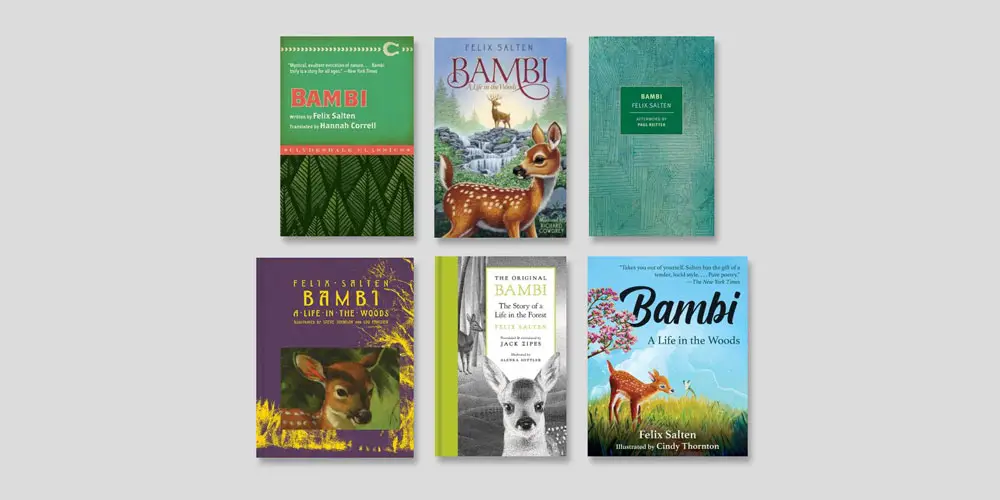How can I read Bambi: A Life in the Woods by Felix Salten in English?
Bambi: Eine Lebensgeschichte aus dem Walde, a novel in German by Austrian Jewish author Felix Salten, was serialized in 1922 and published in book form in 1923. The first English translation was published in 1928 with illustrations by Kurt Wiese.
Why is the novel called ‘Bambi’?
The main character’s name is based on the Italian word ‘bambino’, meaning ‘child’, as is the girl’s name ‘Bambi’, most popular in the US in the year 1979.
Bambi: Translation History
There are now four in-print translations of Bambi.
- 1928 – Whittaker Chambers (Simon & Schuster)
- 2019 – Hannah Correll (Simon & Schuster)
- 2022 – Jack Zipes (Princeton University Press)
- 2022 – Damion Searls (New York Review Books)
The original text is public domain in the US as of January 1, 2022, which means American publishers can release English translations without buying translation rights. That’s why there were two new translations released in 2022.
The 1928 English translation will remain copyrighted until 2024.
See below for details on the English Bambi translations.
Other Books by Felix Salten
Salten is the author of numerous works, including a sequel to Bambi titled: Bambi’s Children.
Simon & Schuster’s series “Bambi’s Classic Animal Tales” includes:
- Bambi
- Djibi
- Perri: The Youth of a Squirrel
- Florian: The Emperor’s Stallion
- Fifteen Rabbits
- The City Jungle
- The Hound of Florence (the basis of the 1959 Disney film The Shaggy Dog!)
- Bambi’s Children: The Story of a Forest Family
- A Forest World
- Renni the Rescuer
Who was Whittaker Chambers?
Whittaker Chambers was an American writer, editor, and spy.
He also translated Salten’s Fifteen Rabbits and The City Jungle.
About the Chambers translation of Bambi
- This translation received a lot of attention and positive reviews.
- Although Chambers did not transform Bambi as extensively as Disney subsequently did, his version is not always considered faithful to the original text.
From the introduction to The Original Bambi by Jack Zipes:
“Chambers had a limited understanding of Austrian German and spent little time in Austria. Consequently, his translation is filled with all sorts of errors and fails to capture Salten’s unusual Viennese style of writing and anthropomorphism. Moreover, he mistranslates many German idioms, omits phrases, and does not convey Salten’s profound personal and philosophical dilemma. Nonetheless, the translation became enormously popular: a foreword by the famous writer John Galsworthy, reviews in the New York Times and other newspapers, and the selection of Bambi by the Book of the Month Club lent the translation legitimacy…. The mistakes Chambers made, however subtle they might seem, have had immense consequences for the interpretation and reception of the novel.”
Foreword by John Galsworthy, winner of the Nobel Prize in Literature in 1932:
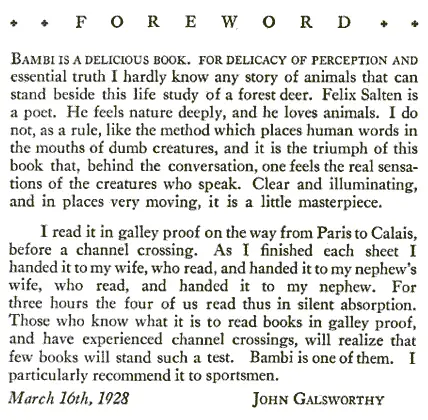
Extract from the Chambers translation of Bambi
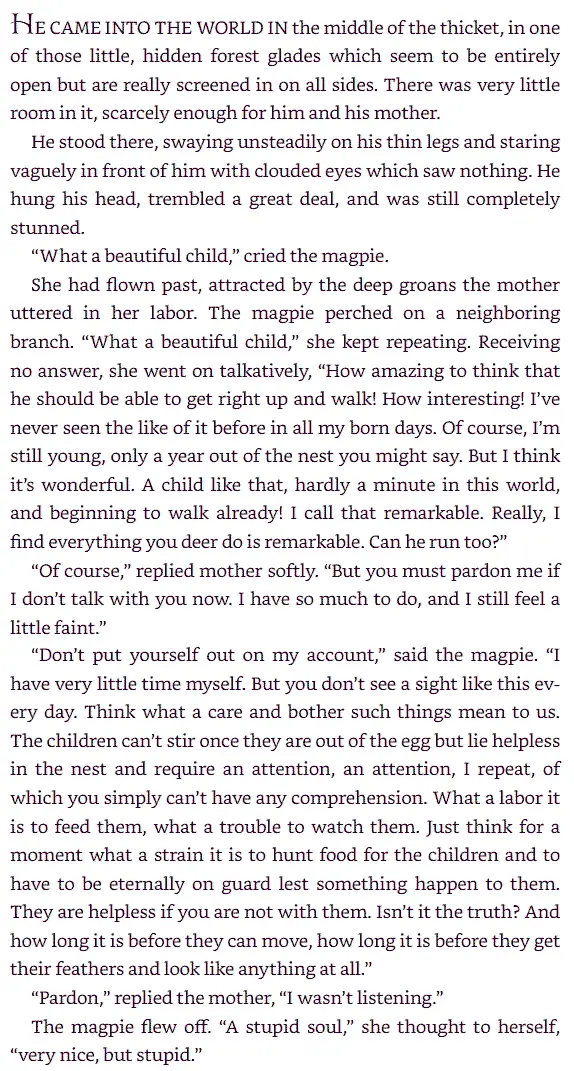
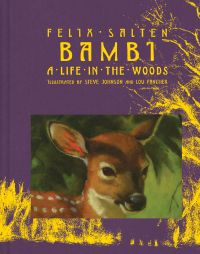
Get the Atheneum Chambers translation of Bambi: A Life in the Woods
Illustrated by Steve Johnson and Lou Fancher. Adapted by Janet Schulman.
Available as a hardcover (ISBN 9781442493452, 192 pages).
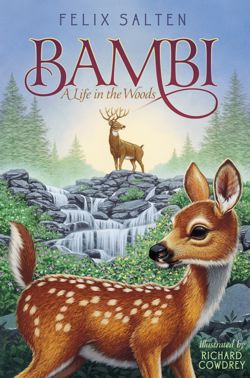
Get the Aladdin Chambers translation of Bambi: A Life in the Woods
Illustrated by Richard Cowdrey.
Available as an ebook (ISBN 9781442486805).
Who is Hannah Correll?
The marketing text says, “Most nineties kids grew up with the adorable Disney movie Bambi, but the basis for the movie was the 1923 book by Felix Salten.” I hypothesize that Correll is one such nineties kid, but it’s certainly not just nineties kids who grew up with Bambi. The movie was re-released six times between 1942 and 1990; that’s a lot of kids in a lot of decades.
About the Correll translation of Bambi
I spotted some typos, and I take issue with some of the wording. For example:
- Serious books do not spell “all right” as “alright”.
- There’s an important difference between “lay” and “lie”; hens lay eggs, deer lie down.
- The game “catch” involves a ball; what Bambi and his mother played was not catch but “chase” or perhaps “tag”.
In short, I’m glad a modern translation exists, but the book could have been copyedited better.
I have a theory that this English translation was mainly produced to serve as the basis for Gina Gold’s illustrated adaptation, but the publisher figured they might as well sell the whole novel too.
Extract from the Correll translation of Bambi
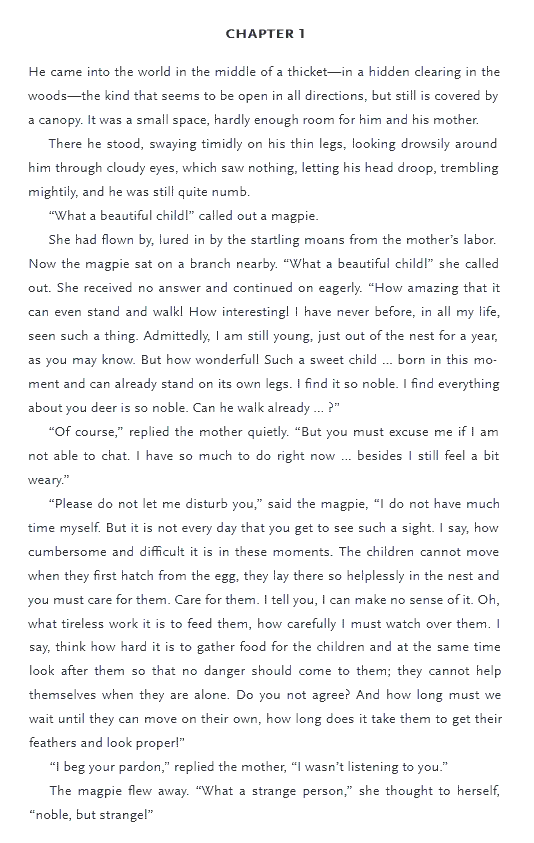
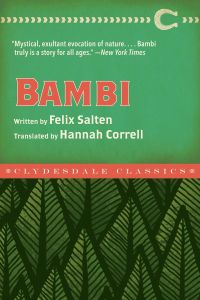
Get the Clydesdale Classics Correll translation of Bambi: A Life in the Woods
Available as a paperback (ISBN 9781949846058, 218 pages).
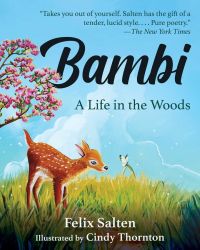
Get the Racehorse Correll translation of Bambi: A Life in the Woods
Adapted by Gina Gold and illustrated by Cindy Thornton.
Available as a hardcover (ISBN 9781631586422, 88 pages).
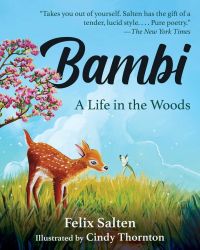
Get the Racehorse Correll translation of Bambi: A Life in the Woods
Adapted by Gina Gold and illustrated by Cindy Thornton.
Available as an ebook (ISBN 9781631585361).
Who is Jack Zipes?
Jack Zipes is a Jewish American writer, editor, and translator. He is a professor emeritus with expert knowledge of German literature and children’s literature and has translated and written extensively about Grimms’ fairy tales.
About the Zipes translation of Bambi
The book includes 11 illustrations by Alenka Sottler, an award-winning painter and illustrator who lives in Ljubljana, Slovenia.
The introduction describes the book as an allegory and ties it to the life of the author.
From the introduction:
“Felix Salten was a compassionate advocate for animals, and he once wrote: ‘When people finally wake up and realize either through the power of laws or the power of education that any cruel treatment of animals is a crime and any arbitrary killing of an animal is murder, then treacherous manslaughter and assassination will become less frequent. Then our goal, which is to create peace, will move considerably closer within our reach.’ … Salten’s novel is a brilliant and profound story of how minority groups throughout the world have been brutally treated, even when they try to live peacefully in their own environment…. Owing to Salten’s extraordinary empathetic composition, Bambi can be read on several levels: as a german Bildungsroman, or novel of education; an existentialist autobiography; and a defense of animal rights.”
Lit Hub: ” ‘A Syrupy Love-Fest.’ On the Blasphemous Disneyfication of Felix Salten’s Bambi” by Jack Zipes
“Salten’s novel is a brilliant and profound story of how minority groups throughout the world have been brutally treated, even when they try to live peacefully in their own environment. Read in the original language and in its sociohistorical context, Bambi is, if anything, dystopic and sobering, for it reveals the cutthroat manner in which powerless people are hunted and persecuted for sport. Salten was able to capture this existential quandary through a compassionate yet objective lens, using an innovative writing technique that few writers have ever been able to achieve.”
The Guardian: “Bambi: cute, lovable, vulnerable … or a dark parable of antisemitic terror?” by Donna Ferguson
“[T]he new translation… attempts to convey in English for the first time the way that certain characters in Salten’s novel have a Viennese ‘flair’ when they talk in German. ‘The animals have wonderful ways of talking, which makes you feel as though you are in a Viennese cafe. And you immediately recognise that they’re not talking how animals talk. These are human beings.’ ”
The Telegraph: “Graphic violence, Zionist parables and no happy ending: the Bambi Disney didn’t want you to see” by Jake Kerridge
This paywalled article looks to be saying something similar to what the Guardian article says: the book is nothing like the movie.
The Times of Israel: “New translation of ‘Bambi’ showcases tale as allegory on early Austrian antisemitism”
The Zipes translation is “looking to showcase the original text as a parable foreshadowing the fate of Jews in the Holocaust… [and] aiming to make clear the political and societal undertones that informed the original version.”
The Jewish Chronicle: “Is Bambi really a foretelling of the Holocaust?” by Gloria Tessler
“You could read many things into Bambi’s story: abandoned children, human danger to wildlife, to conservation and the planet. But the Holocaust?… Whether or not Salten intended his novel to prophesy the decimation of European Jewry, the Nazis certainly thought so. In 1935 they banned the book because they perceived it to be a Jewish allegory of encroaching fascism. ”
Wall Street Journal: “‘The Original Bambi’ Review: Afterlife of a Fawn” by Meghan Cox Gurdon
This paywalled article is contrasting the Disney movie and the original book. Perhaps, since David Chambers wrote to protest, the review accuses the Whittaker Chambers translation of infidelity to the original story (possibly because Zipes does).
WSJ Opinion: “‘Bambi,’ Whittaker Chambers and the Art of Translation” by David Chambers
“Meghan Cox Gurdon’s review of Jack Zipes’s new translation… does an injustice to my grandfather, Whittaker Chambers, and his 1928 translation of the novel…. Chambers’s simple, poetic translation contrasts well with the horrors that came after. His translation in no way transformed ‘Bambi’ into ‘a story for children’: Disney did that.”
The Spectator: “The Dark Story Behind Bambi, the Book Hitler Banned” by Piers Torday
“[I]f you were one of many children traumatised by an unseen hunter shooting Bambi’s mother in the Disney film, consider this your trigger warning: what follows is far bleaker…. Salten’s allegory derives its real power from the experience of anti-Semitic alienation, persecution and genocidal slaughter played out in a grimly ironic woodland paradise.”
New York Times: “A Deer in the Headlights: ‘Bambi’ Reconsidered” by Bill McKibben
After noting that Bambi is “a meditation on powerlessness and survival told with great economy and sophistication”, this author of this book review focuses on the change (for the worse) in the natural world in Europe. Of course he would; he teaches environmental studies.
Publisher’s Weekly: “New Bambi Translation Reveals the Dark Origins of the Disney Story” by Joanne O’Sullivan
“There’s no happily ever after for Bambi in the original story. Instead, he must make his way through the forest alone. Ultimately, Zipes said, Salten chose to focus on the themes of solitude, loneliness, and lack of connection. He believed ‘that animals who don’t want to be killed have no choice but to become loners. As a Jew, he knew what it meant to be pursued and killed. He knew how difficult it was to assimilate and play by the rules of a society that he and his ancestors had not created. Bambi is indeed Salten, and Salten is Bambi.’ ”
Princeton University Press: “Bambi: The Lonely Destiny of Outsiders” by Jack Zipes
“Salten never wrote this book for children, and it is time that we recognize Bambi as a work that anticipated the devastation of European Jews and also draws parallels with the way that minorities are treated in various countries throughout the world.”
Princeton University Press (Podcast): ” ‘Bambi’ isn’t about what you think it’s about” by Jack Zipes
This is an interesting interview with translator Jack Zipes, which spans a number of topics. Zipes originally refused to translate Bambi for the book’s 100th anniversary because he didn’t like Disney’s “pervertedly sweet” story, but afterwards he learned about the original text and read the Chambers translation, which he felt was “not a terrible translation” but was “faulty” because “Whittaker Chambers had no idea of the way Austrian German is much different than high German from Germany.”
Jewish Book Council: “Not Meant for Children: Felix Salten and the story of Bambi” by Jack Zipes
“Felix Salten was one of the most outspoken Austrian writers in the first half of the twentieth century. Although he sought to bring a message about the importance of civility to European and American readers, his works have been misunderstood, ignored, and exploited. It is important to explore why Salten failed, and why he turned to animal stories such as ‘Bambi’ to express his conflicted feelings as a Jew who wanted to be accepted by elite Austrian society.”
Slovenia Times: “Alenka Sottler illustrates new English translation of Bambi”
The 11 illustrations took the artist almost three years.
The Scholarly Kitchen: “Bambi for the Serious Reader” by Jill O’Neill
“I bought the book on the basis of Alenka Sottler’s striking artwork as I had no particular interest in reading Bambi at that point. The physical book itself is nicely produced. What I hadn’t expected was how well the artwork would translate to an imperfect e-ink environment, whether that of a Paperwhite device (several generations old) or that of the 2022 Kindle Scribe device. Even on a cheap Android tablet, the dozen or so black-and-white illustrations display well, drawing in the reader…. The Original Bambi may or may not qualify as a twentieth-century classic, but the book has benefited from the care shown here by the collaborative team of translator, artist, editor, and press staff. This particular edition is a high-quality example of the value added to a text via an attentive publishing process.”
Translator’s note:
Bambi is a sad but truthful novel. It was never intended for children. Unfortunately, the little ones—not to mention their parents—have been fed a diluted version in film and numerous books. Salten, a brilliant Austrian journalist and lover of animals, was also a dedicated hunter, a killer of deer and other harmless beasts. His novel Bambi, written after World War I, is an allegory about the weak and powerless in the world. This story has great implications for the development of humanity in our conflicted world. I was overwhelmed by Salten’s dilemmas as I translated his work and hope that I have done it justice.
Extract from the Zipes translation of Bambi
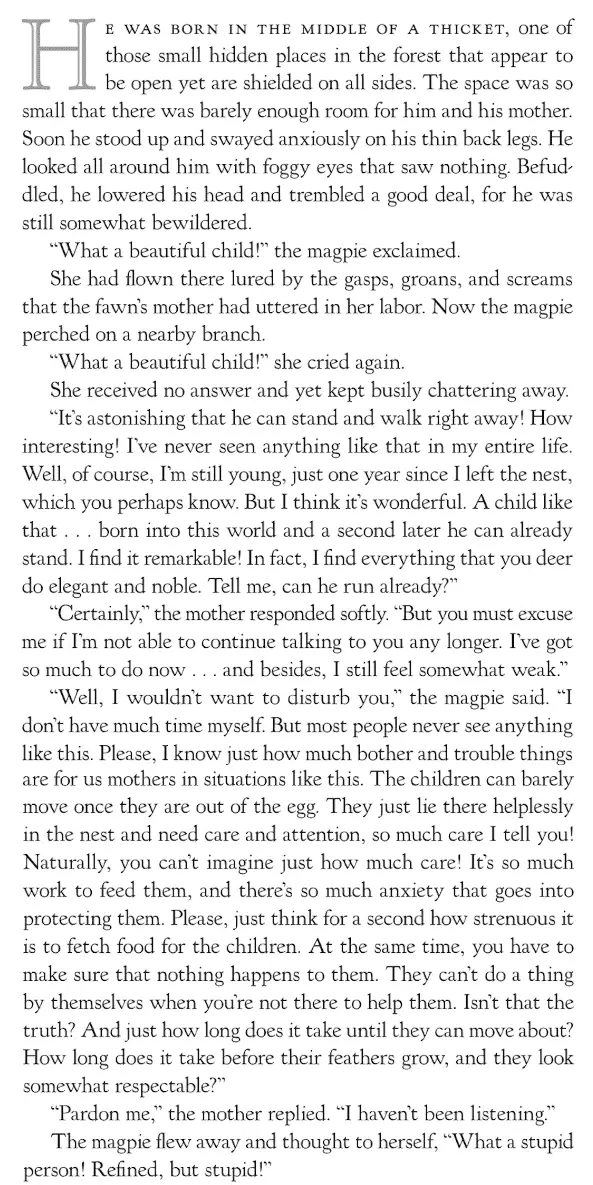
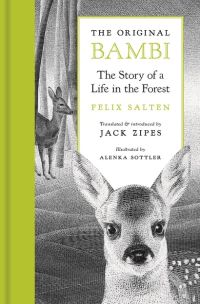
Get the Princeton University Press Zipes translation of The Original Bambi: The Story of a Life in the Forest
Includes an introduction by Jack Zipes and 11 black-and-white illustrations by Alenka Sottler.
Available as a hardcover (ISBN 9780691197746, 192 pages).
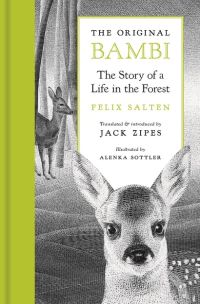
Get the Princeton University Press Zipes translation of The Original Bambi: The Story of a Life in the Forest
Includes an introduction by Jack Zipes and 11 black-and-white illustrations by Alenka Sottler.
Available as an ebook (ISBN 9780691232263).
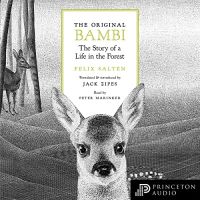
Get the Princeton University Press Zipes translation of The Original Bambi: The Story of a Life in the Forest
Narrated by Peter Marinker. With a preface read by John Chancer. Unabridged.
Available as an audiobook.
Who is Daimon Searls?
Daimon Searls is an American writer and translator. He does translation from German, French, Norwegian, and Dutch. He has translated works by Hesse, Proust, and Rilke, among others.
About the Searls translation of Bambi
Chicago Review of Books: “Felix Salten’s Bambi: A Prismatic Centennial” by Gina Nutt
“Searls’ poetic translation immerses the reader in forest life, putting us ground level with the animals, for better and worse. Days filled with foraging, rest, and communication evoke the full lives these nonhumans lead. Salten casts milestone moments in awe-inducing light…. The sense of wonder is galvanizing. It creates a reverence, emotional and physical, for the sublime—the astonishment of encountering something beautiful up close, in sharp definition, for the first time.”
According to the publisher: “Paul Reitter’s afterword discusses the surprising political readings to which Salten’s fable of the woods was subjected.”
Jewish Review of Books: “Bambi’s Jewish Roots” by Paul Reitter
This article links Bambi to Zionism, but also to a de-romanticized attitude to nature: “Salten wanted to disabuse members of the then-popular ‘back to nature movement’ of idealizations that evidently annoyed him…. Bambi sets the record straight by emphasizing the inevitability of violence and privation in its sylvan setting. Even without the hunters, the woods would be a dangerous, difficult place for most animals.”
Extract from the Searls translation of Bambi
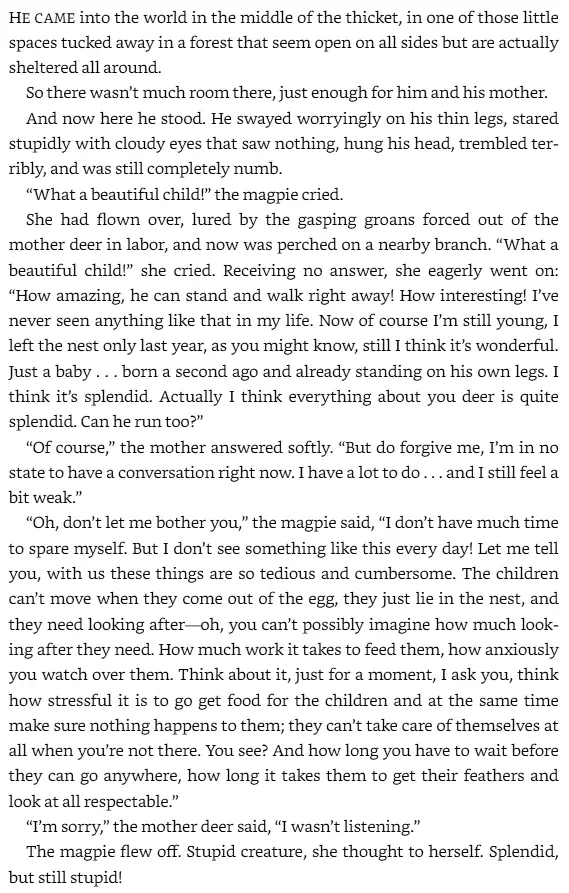
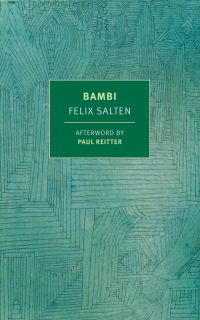
Get the New York Review Books Searls translation of Bambi: A Life in the Woods
Includes an afterword by Paul Reitter.
Available as a paperback (ISBN 9781681376318, 208 pages).

Get the New York Review Books Searls translation of Bambi: A Life in the Woods
Includes an afterword by Paul Reitter.
Available as an ebook (ISBN 9781681376318).
Bambi the Disney movie
Until someone mentioned it to me in mid-2021, I had no idea Bambi was a book before it was a Disney movie. The 1942 film was re-released to theaters in 1947, 1957, 1966, 1975, 1982, and 1988, so when I watched it in a theater as a kid, it seemed new. I’ve seen it at least twice as an adult. I love the music and I see a lot of parallels with The Lion King, another bildungsroman that depicts the circle of life in general and the death of a parent specifically.
Although it’s impossible not to compare Salten’s original story to Disney’s version of it, I think books and movies are vastly different art forms. The movie wasn’t trying to be the book; it was always its own thing. Although it owes much to the book and its author, the movie is a separate creation, and much loved by generations for what it is. Reportedly, even Salten liked it.
Bambi the SNL skit
A live-action (CGI) Disney remake of the 1942 Disney cartoon may or may not be coming soon. Meanwhile, perhaps you will be amused by the Saturday Night Live skit featuring Dwayne Johnson exacting vengeance on deer hunters.
Bambi the novel
This is a long and detailed piece with lots of background information that upholds the broadest possible interpretation of the novel, and expresses a preference for the original English translation:
The New Yorker: “Bambi is even bleaker than you thought” by Kathryn Shulz
“Salten insisted that he wrote ‘Bambi’ to educate naïve readers about nature as it really is: a place where life is always contingent on death, where starvation, competition, and predation are the norm…. But authors do not necessarily get the last word on the meaning of their work, and plenty of other people believe that ‘Bambi’ is no more about animals than ‘Animal Farm’ is. Instead, they see in it what the Nazis did: a reflection of the anti-Semitism that was on the rise all across Europe when Salten wrote it…. Yet the most striking and consistent message of the book is neither obliquely political nor urgently ecological; it is simply, grimly existential…. In the language in which it was written…. it is often described not as a bildungsroman—a general novel of maturation—but more specifically as an Erziehungsroman: a novel of education and training…. This is ‘The Fountainhead,’ with fawns…. Zipes is knowledgeable about his subject matter, but he is not a lucid thinker or a gifted writer… and the Chambers translation, from which I have quoted here, is much the better one.”
Here’s another take on Salten’s envisioning of the animal world, pointing to a very broad allegory, if any:
The Yale Review: “The Darker Side of Bambi” by Charlie Tyson
“The real contribution of the original Bambi is the empathy and precision with which Salten imagines his way inside animal life. This narrative, written by an avid hunter who revered the animals he killed and who once speculated that if we learned to treat animals justly, then peace among human beings would ‘move considerably closer within our reach,’ marks a good-faith effort to discover, in prose, an alien form of embodiment.”
Bambi: Best Translation?
Either the Zipes translation or the Searls translation would be a good choice from the standpoint of accuracy. For esthetics, the Zipes translation, in an illustrated hardcover edition published by Princeton University Press, wins my vote.

